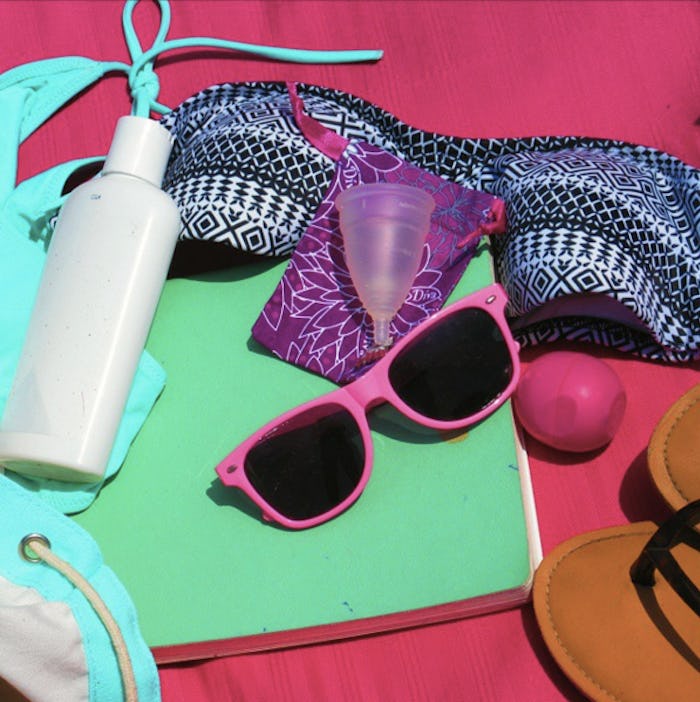Life
9 Mistakes You Make With A Menstrual Cup That Could Make It More Complicated
Menstrual cups have gained a huge following in recent years, and many women consider them the answer to their period management prayers. But maybe you decided to give the cup a shot, only to decide, "nah. This is just not for me." If you’ve only tried it out once or twice, don’t throw it out just yet. They have a somewhat steep learning curve, and many women make a few mistakes using menstrual cups for the first few times. Take heart: after a couple cycles of trial-and-error, you will likely find the cup — and placement method — that works best with your body.
With just a few adjustments to your placement, and maybe going up or down a size in particular brands, you too can become a convert to the cup. And although it may take a couple months to get everything down to a science, the chance to give tampons and pads the heave-ho is pretty good motivation for many women. So even if your first experiences with the cup were less than perfect, you’ll likely hit your stride with just a few minor adjustments. Because a period with no strings attached is a goal worth striving for (at least for many women).
1Giving Up Too Quickly
Most women have to try out the cup a few times before getting everything right. As Meagan Brockway, customer service manager for GladRags, explained in Racked, "It’s hard to get used to inserting a menstrual cup and finding out the best way to do it for you, what works best for your body." But once you get the hang of it, cups can be a pretty flawless method of dealing with menses.
2Using The Wrong Cup Size
Knowing what size menstrual cup you should use can be tricky to guess (how exactly does one take measurements down there?). For instance, the Lunette brand makes two sizes, but notes that you may not be able to just guess your size. Trial and error may be your best bet.
3Not Folding Properly
There are many ways to fold the cup, and it may take a few tries to find the one that works best for you. The Diva Cup's website explains the "U Fold" and "Push Down" methods, while the Lena Cup's site also includes instruction for a "7-Fold" variation. It may take a few tries to find the fold that fits you best.
4Putting It In Too Deep
Yes, sometimes shallow is better. As the JuJu site notes, cups should "sit" lower than a tampon once inserted. So if you're used to tampons, you may need to adjust your aim a little lower.
5Letting The Stem Bug You
The stem can be altered to fit your body. You can cut its length, or even "remove the stem completely," as the Mooncup's site explains. It's just a matter of personal preference.
6Emptying Too Little
One of the major benefits of menstrual cups is the amount of time you can leave them in. As Buzzfeed notes, "you can go up to 12 hours in between emptyings." But this is just a guideline; if your flow is exceptionally heavy, you may need to empty it more often to avoid leaks.
7Not Cleaning Correctly
The reusable cups do need regular cleaning. But according to the Ruby Cup's site, "some soaps contain perfumes which can cause irritation to your vagina and cause an imbalance to your natural pH; if you want to wash with soap, make sure it is an fragrance-free, mild soap." So maybe just save the fancy soap for the rest of your body.
8Getting Frustrated
Getting stressed will only work against you. As the Gladrags site wrote, "tense muscles will work against you when it comes to inserting and removing the cup, so take some deep breaths if you're feeling stressed." And anything that will really help relax your muscles, such as a warm shower or bath, might be a great way to prepare for using a cup the first time.
9Using Them With An IUD
Can you use a menstrual cup with an IUD? Well, it depends. Although a 2012 study in Contraception found that there was "no evidence that women who report using menstrual cups or tampons for menstrual protection had higher rates of early IUD expulsion," there is a potential of the cup pulling on your IUD's strings. This is one of those cases you may want to check out with your doctor before attempting to use a menstrual cup.
